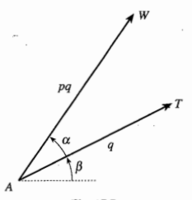burgerandcheese
Junior Member
- Joined
- Jul 2, 2018
- Messages
- 85
I believe what they mean by "spiral enlargement" is that we obtain AW by multiplying AT by 2 and rotating it by pi/3. And that is just what they have done.
If that is not enough to help, please identify what specifically you are still confused by.
That is 2e^(pi/3 i), which is a multiplication by 2, and a rotation by pi/3 radians, which is just what they said they wanted to do.I don't understand how they got 2(cos(pi/3) + i*sin(pi/3))
That is 2e^(pi/3 i), which is a multiplication by 2, and a rotation by pi/3 radians, which is just what they said they wanted to do.
If that is not clear, what do you know about rotation of complex numbers? We have to connect this to something you understand, and there are a couple ways you might have seen this.

So you do know that multiplying vectors multiplies their magnitudes and adds their angles.
So multiplying a number z by 2(cos(pi/3) + i*sin(pi/3)) will double the magnitude, and rotate by pi/3 radians (that is, add pi/3 to the angle of z). That's exactly what they want to do, right?
I want to point out that AT and AW, as expressed by q*eiß and p*q*ei(α+ß) are not really vectors - those are phasors. One main difference between vectors and phasors is that:What I know is if we have t = q(cos(β) + isin(β)) and represent it as vector AT and s = p(cos(α) + isin(α)), then w = st represented as a vector AW is rotated from AT anticlockwise by α radians or rotated from the same horizontal axis by (α + β) radians and has magnitude pq:
View attachment 12574
This will sound weird but I don't think I know what I don't know.....
